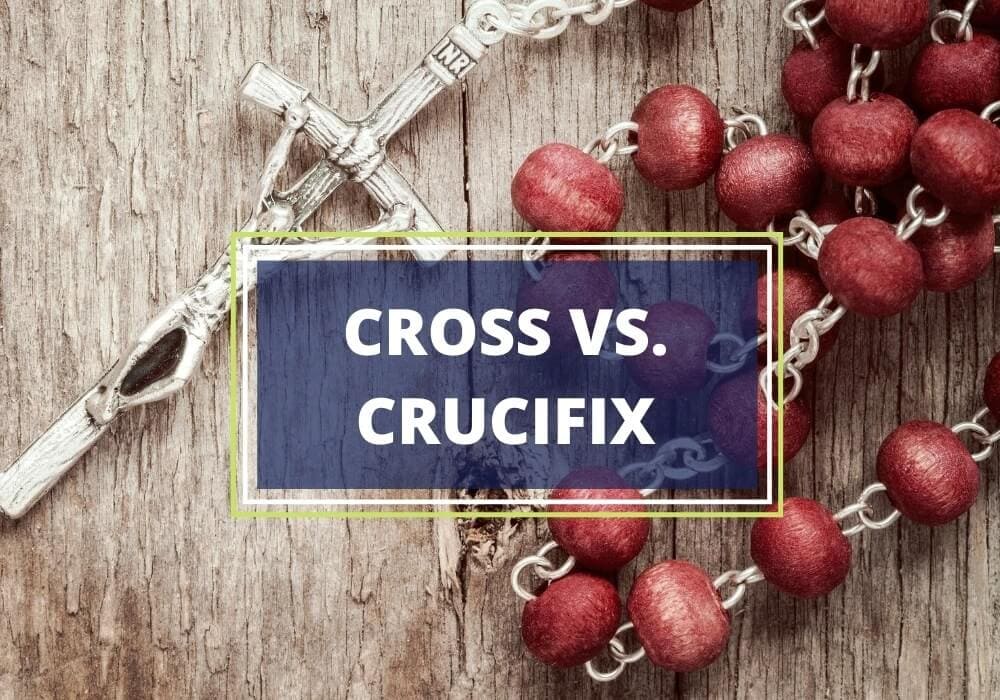
Table of Contents
The terms cross and crucifix are often used to refer to the same symbol, but there are fundamental differences between these two words. There are many types of crosses, of which crucifixes are one. Let’s break down the differences between these two terms and clear any confusion.
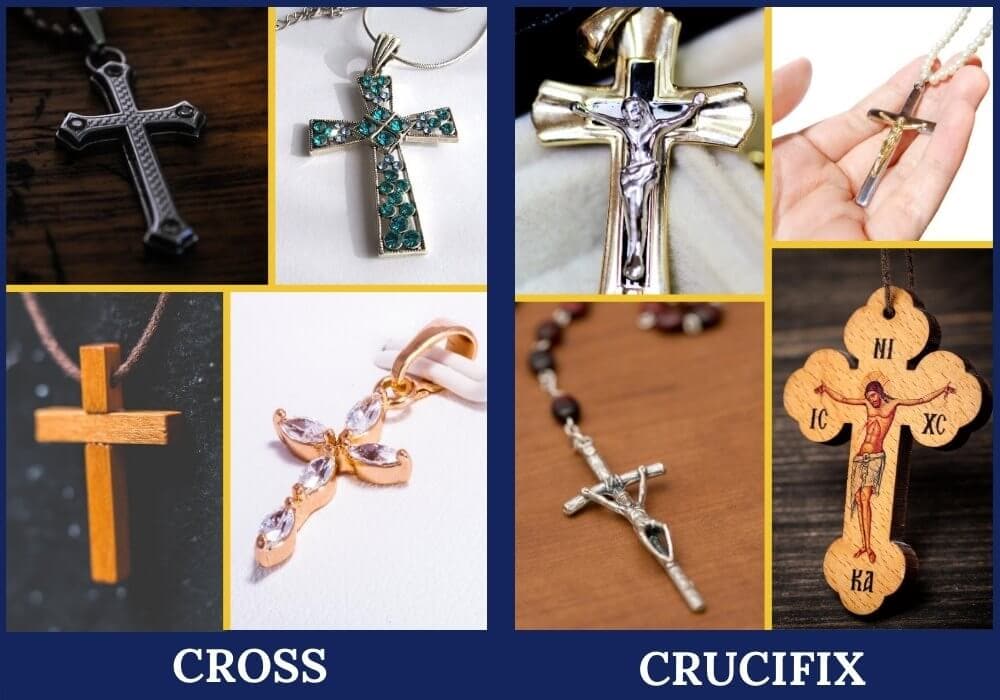
Cross vs. Crucifix: Design and Symbolism
The cross and the crucifix are key symbols in Christianity, but they’re different in design and what they stand for. A cross is basically two lines or bars crossing each other, usually at right angles. It’s pretty simple and plain, symbolizing Jesus Christ’s crucifixion. The cross is a big deal in Christianity because of its straightforward design that represents faith, sacrifice, and the idea of being saved.
The crucifix, though, has more detail. It’s a cross with the corpus, which means the body of Jesus. This shows Jesus at the moment of his crucifixion, complete with the crown of thorns and wounds, making it a lot more graphic. The crucifix really highlights Jesus’ physical suffering and the sacrifice he made for people’s sins.
What sets a cross and a crucifix apart is whether Jesus’ body is there or not. The plain cross is more about the Christian faith in general, while the crucifix zooms in on Jesus’ suffering and his humanity. Both are important in Christianity, but they tell different parts of the Christian story.
Cross vs. Crucifix: Origin and History
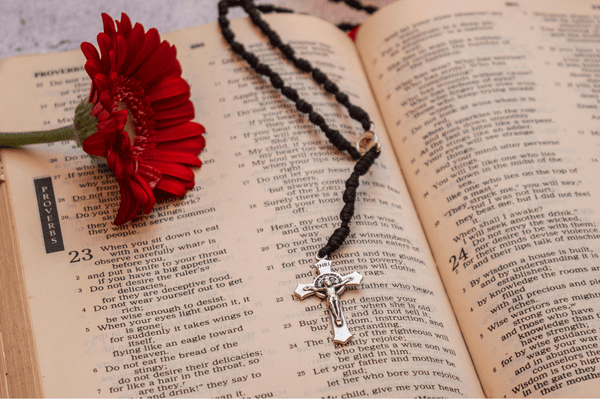
The cross and the crucifix started out as Christian symbols pretty early in the religion’s history. The cross first showed up after Jesus Christ was crucified. It really started to catch on after the 4th century when Emperor Constantine made Christianity legal in the Roman Empire.
At first, Christians weren’t too keen on using the cross because it reminded them of crucifixion, a common way of executing people back then. But as time went on, the cross began to stand for Jesus’ resurrection and the promise of being saved, making it a key symbol in Christian art.
The crucifix, which shows Jesus’ body on the cross, came into the picture a bit later. People think it first popped up in the 5th century and got more popular in the 6th and 7th centuries, especially with Roman Catholics. The crucifix is a direct reminder of Jesus’ pain and the sacrifice he made.
Over the years, how people use and see the crucifix has changed, with different Christian groups and cultures adding their own touches. Today, both the cross and the crucifix are major symbols, each representing important parts of Christian belief and teachings.
Cross vs. Crucifix: Symbolic Significance
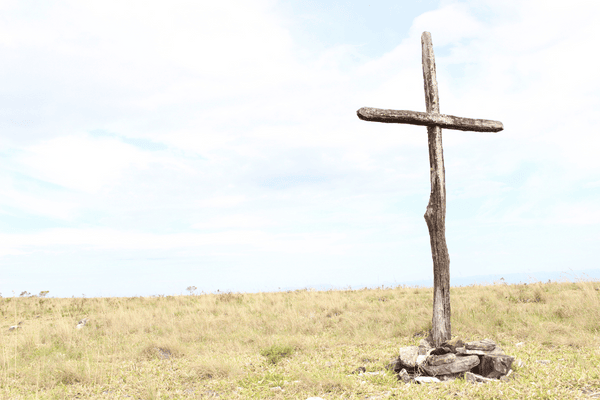
The cross and the crucifix are both important in Christianity, but they mean different things. The cross, just by itself, is a big symbol of faith, resurrection, and hope. It started as a sign of how Jesus was crucified but has come to mean a lot more. For many Christians, the empty cross is all about Jesus beating death and coming back to life. It’s a symbol of the hope for life after death and the promise that good wins over evil.
On the other hand, the crucifix, which shows Jesus on the cross, really focuses on the sacrifice and pain Jesus went through. It’s a clear reminder of both the physical and spiritual suffering he faced. The crucifix brings out the human side of Jesus’ story, showing his humility and the huge sacrifice he made for everyone’s sins.
It makes people think about what salvation really costs and how much Jesus loved humanity. So, while the cross is about resurrection, the crucifix zeroes in on Jesus’ act of sacrifice, giving it a deeper, more serious meaning in Christian faith.
Cross vs. Crucifix: Denominational Preferences
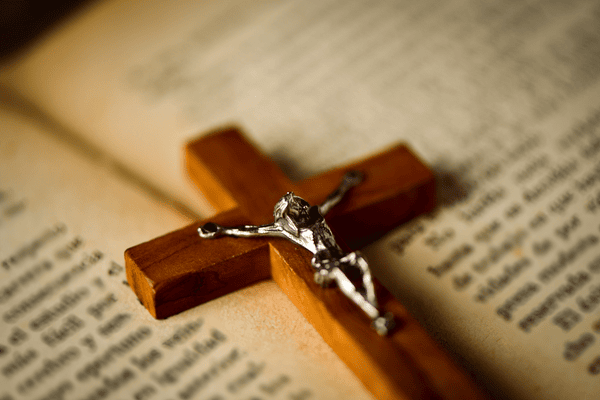
In the world of Christian denominations, the choice between a cross or a crucifix often tells a lot about their core beliefs and traditions. Roman Catholics and Eastern Orthodox Christians usually go for the crucifix.
They find the clear image of Christ on the cross to be a powerful reminder of his sacrifice and suffering for saving humanity. The crucifix is pretty important in their rituals and you’ll see it a lot in their churches and homes.
On the other side, many Protestant groups lean towards a plain cross. This comes from their focus on Christ’s resurrection more than his crucifixion. For them, the empty cross stands for Christ having risen, beating death and sin. That’s why you’ll find the plain cross more often in Protestant churches. It’s a symbol of faith that highlights the victory and hope in the Christian story.
So, whether a group picks the cross or the crucifix, it really shines a light on how they view Christian teachings and the role of Christ in salvation.
Cross vs. Crucifix: Cultural and Artistic Representations
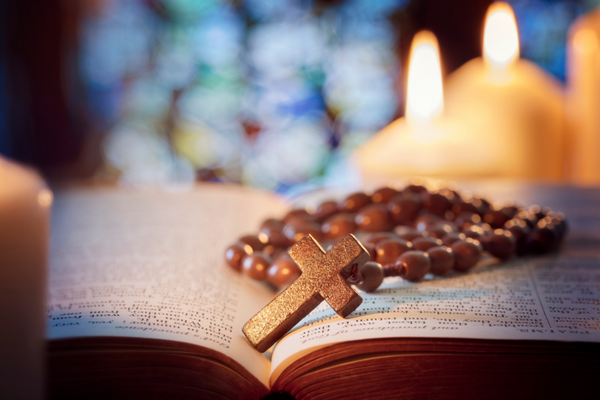
The cross and crucifix have really made their mark in art, architecture, and culture, influencing how people see and use them for centuries. In the art world, the cross pops up everywhere — in paintings, sculptures, and stained glass.
It’s all about representing faith, sacrifice, and redemption. Its simple design lets artists fit it into all sorts of styles, from old medieval works to modern abstract pieces.
The crucifix, showing Christ, gives a more intense picture. It was a big deal in Renaissance art, showing Christ’s emotions and suffering. This has really shaped how people understand sacrifice and compassion in Christianity.
In architecture, you can see both symbols a lot. Crosses are on top of church steeples and altars, while crucifixes are inside churches, on altarpieces, and on building fronts. They’ve become key parts of Christian culture, not just as religious symbols but also as artistic ways to express deep spiritual and human ideas across different times and places.
Cross vs. Crucifix: Contemporary Usage
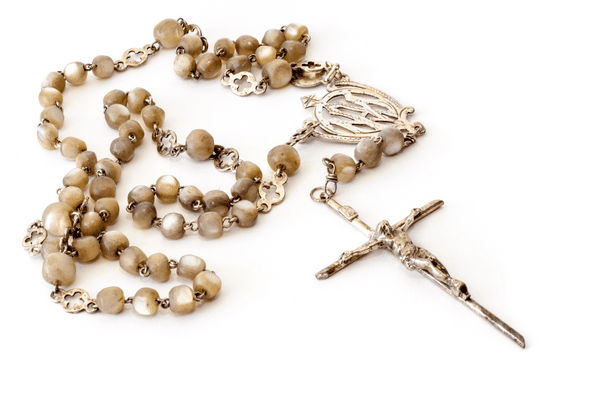
The cross and crucifix are big not just in religious practices but also in jewelry and pop culture today. In churches, you’ll often see crosses in the design and during services, where they stand for faith and hope. The crucifix, showing Christ, is really important in Catholic rituals, helping people focus on prayer and think about Jesus’ sacrifice.
As for jewelry, lots of people wear crosses and crucifixes as necklaces or charms. They’re either showing their faith or just making a fashion statement. The cross is especially popular, even for those who aren’t into it for religious reasons.
In movies, books, fashion, and even tattoos, the cross and crucifix show up a lot. They’ve moved beyond just being religious symbols to having all kinds of meanings, from spiritual to just looking cool. This shows how these symbols connect with people in so many different ways nowadays.
Is One Better Than the Other?
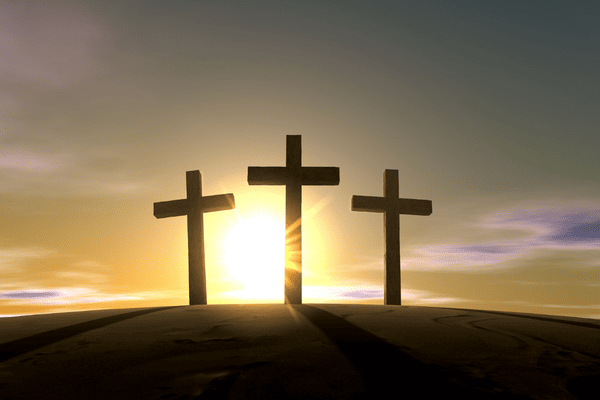
Which is better, the cross or the crucifix? Well, it really comes down to what you believe, where you’re from, and how you use these symbols.
Many Protestants lean towards the plain cross because it highlights Jesus Christ’s resurrection. They see it as a symbol of faith, hope, and being saved, representing the belief that Christ has beaten death.
Roman Catholics and Eastern Orthodox Christians often go for the crucifix, though. They find the image of Christ on the cross to be a strong reminder of his suffering and sacrifice for everyone’s sins. To them, it symbolizes Jesus’ love, humility, and what it cost to redeem humanity.
In the end, neither is “better” than the other. They just show different sides of Christian beliefs and traditions. Choosing between a cross and a crucifix is a personal thing, usually based on your religious background and what you believe.
Wrapping Up
The cross and crucifix are highly significant in Christianity, each with its own meaning and role in the faith. Whether you like the simple cross or the detailed crucifix, both highlight the rich variety and deep beliefs in Christian traditions.








